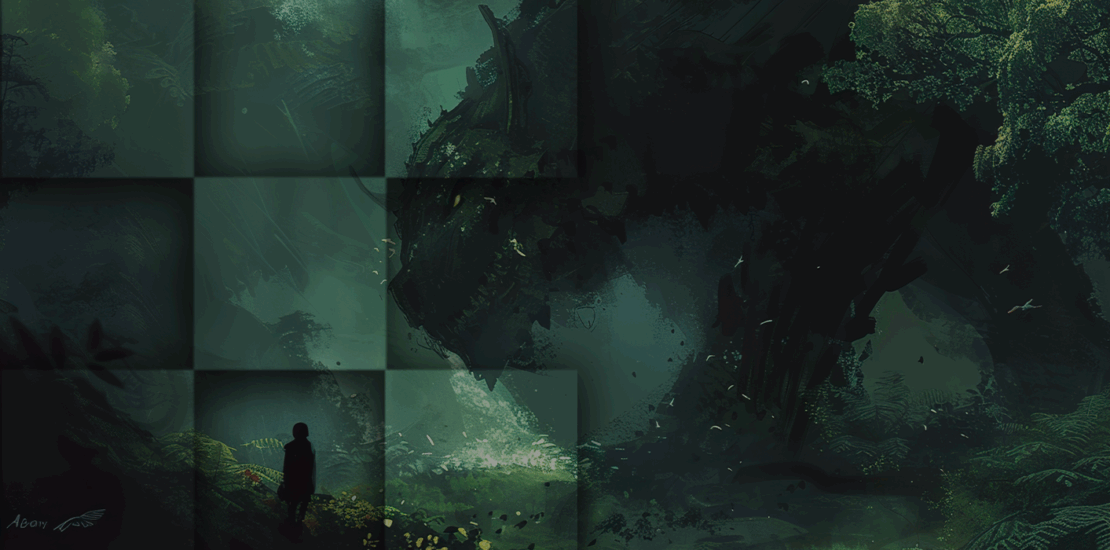From Sketch to Screen: The Evolution of Game Art Pipelines
- July 11, 2025
- Posted by: iXie
- Category: Game Art

Behind every stunning character and detailed game world is a carefully planned process called the game art pipeline. It’s more than just a list of tasks; it is the creative engine that brings a game’s visuals to life and constantly evolves to deliver the rich, immersive experiences players expect.
Every breathtaking vista, every nuanced expression, and every atmospheric lighting effect is the result of countless deliberate processes. Understanding how these pipelines have evolved, from hand-drawn sketches to AI-enhanced workflows, is essential for any studio aiming to thrive in a hyper-competitive industry where visual fidelity, speed, and adaptability define success.
So, how has this vital engine of creation transformed, and what does the future hold for the artists and developers behind our favorite virtual worlds?
Contents
Traditional Workflow
Historically, the game art pipeline followed a linear, compartmentalized structure that could take months or even years from concept to implementation. The key stages included:
Concept Art: Translating narrative and gameplay requirements into visual explorations, including environment sketches, character silhouettes, and color studies.
Modeling: Building 3D meshes in tools like Maya or Blender, with attention to poly count and topology for animation compatibility.
Texturing: Using Photoshop or Substance Painter to craft materials, often hand-painted for stylized looks or photorealistic for AAA realism.
Rigging and Animation: Equipping models with bones and controls for movement, then animating interactions, cycles, and cutscenes.
Lighting and Rendering: Designing lighting setups, often pre-baked, that enhance mood and performance across platforms.
Engine Integration: Importing assets into engines like Unity or Unreal, applying shaders, setting collision physics, and preparing for QA.
This process was predictable but time-consuming. Each department worked in silos, leading to slower iteration cycles and bottlenecks in feedback loops. Yet, it established the baseline from which today’s workflows evolved.

Modern Enhancements
Today, the pipeline is more modular, dynamic, and AI-augmented. Instead of rigid handoffs, artists now operate in iterative feedback loops powered by automation and machine learning.
Key Tools and Emerging Applications
Midjourney: Artists use this to rapidly prototype multiple visual directions from textual prompts. It helps in speeding up early ideation.
Adobe Firefly: Text-to-texture generation enables quick variations. What took hours of manual painting can now be iterated in minutes.
Kaedim: Converts 2D concept art into basic 3D meshes, offering a starting point for modelers.
Runway ML: Handles tasks like animation cleanup, lip sync, and environmental VFX generation.
Beyond the Obvious
AI in Procedural Generation: Tools now assist in generating modular environments, laying out terrains or architectural blueprints based on level design constraints.
Intelligent Asset Management: AI sorts, tags, and suggests assets, streamlining reuse and localization.
AI in QA: Visual difference detectors spot texture seams, UV errors, or rigging flaws, minimizing human oversight time.

A Day in the Life
Before: An artist spends half a day painting multiple versions of a stone texture.
Now: Prompts Adobe Firefly to generate 20 variations in 10 minutes, selects three, refines them in Substance Painter, and pushes them to the pipeline within an hour. The rest of the day is dedicated to high-concept visual experimentation, something they rarely had time for in the past.
Quantitative Impact
Live-service teams increasingly use AI-generated asset variations to accelerate seasonal updates, trimming content timelines by weeks.
Artistic Evolution
AI doesn’t replace artists; it redefines their role. Artists become curators, creative directors, and AI strategists, guiding the machine rather than being replaced by it. This shift frees them from repetition and allows them to focus on worldbuilding, storytelling, and aesthetic leadership.
Democratization of Development
For indie studios, these tools are game-changers. With a small team and smart AI integration, studios can now achieve AAA-style visual fidelity, breaking the monopoly of large publishers. This democratization is fuelling a new era of independent innovation in visual storytelling.

Case Studies
Unknown Worlds – Subnautica: Below Zero
Adopted AI-generated placeholder art to test visual concepts faster. This accelerated environment design during the prototyping stage.
Built proprietary tools that integrate AI into the terrain and material optimization process. It helps maintain world-scale quality while reducing manual asset rework.
Ubisoft – Ghostwriter and Beyond
Beyond narrative AI, Ubisoft is leveraging AI to generate modular NPC visuals, using tagged prompts aligned with art direction guidelines. This has streamlined character diversity without ballooning headcount.
Challenges in Evolving Pipelines (And How to Solve Them)
1. Inconsistent Asset Style
Challenge: AI-generated assets may not align with the game’s established visual identity.
Solution:
- Develop a style prompt library aligned with IP tone.
- Use custom-trained models or fine-tuned checkpoints with data from your own asset archives.
- Apply tools like ControlNet to condition AI generation on specific poses or silhouettes.
2. Over-Reliance on Generative Art
Challenge: Too much AI usage risks homogenized aesthetics and loss of artistic nuance.
Solution:
- Establish a hybrid workflow: AI for speed, human for soul.
- Maintain strong art direction checkpoints to filter outputs.
- For example, Riot Games uses AI only for early ideation, followed by human illustrators who refine and stylize final assets.
3. Toolchain Fragmentation
Challenge: New tools don’t always fit smoothly into legacy production software.
Solution:
- Use integration hubs like ShotGrid, Houdini Engine, or Ftrack.
- Standardize export formats and adopt pipeline automation scripts (e.g., Python-based tools for automatic file conversions and metadata tagging).
4. Intellectual Property Risks
Challenge: Generative tools might be trained on copyrighted material, creating IP conflicts.
Solution:
- Choose AI vendors with clear data provenance and enterprise-grade licensing models.
- For sensitive IP, prefer local model training using studio-owned datasets.
- Stay updated on ongoing litigation and copyright reform related to generative AI to future-proof pipeline decisions.
Conclusion
The game art pipeline is no longer just a production process; it is a strategic advantage. As AI continues to reshape this landscape, studios must navigate not only technical shifts but also cultural and creative transformations.
The game art pipeline is no longer just about efficiency; it’s about pushing the boundaries of what’s visually possible. Studios that embrace this AI-powered future won’t just make games. They will craft living, evolving works of art. Are you ready to rethink your pipeline?
Faqs
A game art pipeline is a structured workflow that guides the creation, review, and integration of visual assets, from concept art to final in-game models. It ensures consistency, quality, and timely delivery.
AI accelerates asset generation, automates repetitive tasks like upscaling and texture synthesis, and enables rapid prototyping. This reduces time and cost while enhancing creativity.
Adopt AI-assisted tools, ensure version control, integrate cross-functional collaboration early, and prioritize modular, scalable asset design for faster iteration and reuse.

